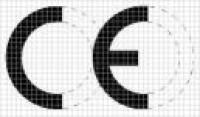What is product safety?
There are many aspects of how to weigh the goods and products that we are buying - quality, handiness and other practical aspects. One of the most important aspects of the product is product safety. The safe product shall mean any product which, under normal or reasonably foreseeable conditions of use including duration and, where applicable, putting into service, installation and maintenance requirements, does not present any risk or only the minimum risks compatible with the product's use, considered to be acceptable and consistent with a high level of protection for the safety and health of persons does not apply any hazard to the person’s property as well to the environment.
The product safety is regulated by a wide range of legislative and policy-making norms in the European Union level. For example, General Product Safety Regulation 2023/988. Since joining the EU all the safety requirements have been in force also in Latvia. Product safety regulations are entitled in the Law on the Safety of Goods and Services.
Responsibility of stakeholders involved in the product safety enforcement
Under the GPSR:
- Economic operators – manufacturers and importers:
- Are responsible for the safety of the products they place on the European market;
- Have a duty to provide complete and reliable information about the safe use of the product or service;
- Have a duty to act immediately;
- Must take the appropriate preventive measures and;
- Must inform the authorities.
- EU Member States enforcement authorities must:
- Ensure that producers and distributors comply with their obligations;
- Establish appropriate enforcement authorities;
- Provide the necessary resources for them to act efficiently;
- Ensure effective, proportionate and dissuasive penalties for infringements.
What do the regulations require?
The Regulations place a general duty on all suppliers of consumer goods to supply products that are safe for normal or reasonably foreseeable use. Safety takes into account factors such as the product's characteristics, instructions and warnings, and the categories of consumers at serious risk when using the product, particularly children or other groups bearing a special risk. Relevant Local or European standards can be taken into account in assessing the safety of a product.
What is CE marking?
By affixing the CE marking, the manufacturer, its authorized representative, or the person placing the product on the market or putting it into service asserts that the item meets all the essential requirements of all applicable been applied. Examples of European Directives requiring CE marking include toy safety, machinery, low-voltage equipment, R&TTE, and EM compatibility. There are about 25 Directives requiring CE marking.




